Prague Neighbourhoods, Locations and Districts
(Prague, Czech Republic)
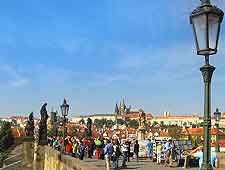
The different districts and neighbourhoods of Prague each have their own place in the city's history and their countless imposing buildings have earned the city many different nicknames, such as the 'City of a Hundred Spires'. The Prague of today is full of history and this is especially so within the district of Stare Mesto, otherwise known as simply the Old Town.
Prague in a city with its roots firmly anchored in the past, dating back as far as the 9th century, although the district of Nove Mesto (New Town) does have an increasingly modern feel and atmosphere, particularly around Wenceslas Square. The appealing Little Quarter is the part of the city which is generally unaffected by recent history and very little building work of any description has taken place in this neighbourhood since the end of the 18th century
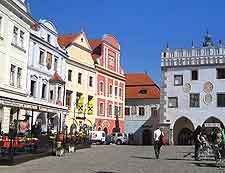
Old Town District (Stare Mesto)
Located at the very heart of Prague, the Old Town district in better known in Czech as the Stare Mesto. Famous for its marketplace in the now Old Town Square (Staromestske Namesti), this area is known to date back as far as the 11th century and borders the eastern side of the River Vltava. By the 13th century, this neighbourhood was considered a town and in the late 1330s, the Old Town Hall was built and still remains one of the most beautiful buildings in Prague. Other places of historical interest here include Celetná Street, Charles Street, Mariánské Square, the Powder Gate and the Knights of the Cross Square.
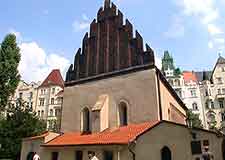
Jewish Quarter (Josefov)
The Jewish Quarter of Prague lies on the north-easterly side of the city, just beneath where the River Vltava curves strongly and heads eastwards. Since the Middle Ages, Jews have lived in this part of the city and suffered great discrimination, until many of the oppressive laws were lifted in 1784 by Joseph II. The Jewish Quarter became an official district of Prague in the mid-19th century and was subsequently named after this leader, simply becoming known as Josefov. Today, you can expect to find a number of imposing synagogues, such as the Klausen and Pinkas synagogues, along with the Old Jewish Cemetery, St. Agnes's Convent and the Jewish Town Hall, a striking white and pink building built between 1570 and 1577. Wenceslas Square is close by and is in actual fact a prominent boulevard lined with hotels, eateries and shops.
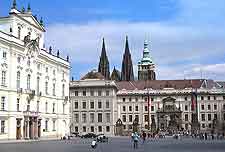
Castle and Hradcany District
The very history of the city begins with Prague Castle, a glorious fortress established in the 9th century by Prince Borivoj. Standing high above the city, the castle complex comprised a number of additional buildings, including a palace and a monastery, all of which were enclosed by city walls. In the early part of the 14th century, a small town known as Hradcany was founded alongside Prague Castle and is where you will find structures such as the 14th-century St. Vitus's Cathedral (Chrám Sv. Vita) and its eye-catching Renaissance bell tower, the Royal Palace (Královsky Palác) and its landscaped gardens, the Sternberg Palace (Sternbersky Palác) and the Strahov Monastery (Strahovsky Kláster).
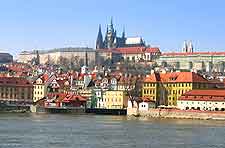
Little Quarter / Lesser Town (Malá Strana)
The settlement of the Little Quarter was established in the middle of the 13th century, on the slopes located at the very bottom of Castle Hill itself. Highlights within this charming neighbourhood include exceptional views across the River Vltava and towards the Old Town Prague district, the Observation Tower and its Funicular Railway (Lanová Dráha), and the central Little Quarter Square, home to the Church of St. Nicholas (Kostel Sv. Mikulase), which was constructed between 1703 and 1761.
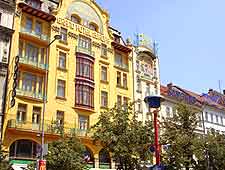
New Town District (Nove Mesto)
Founded during the mid-14th century by Charles IV, New Town Prague has grown up around three important public market places, Charles Square, Senovázné Square and Wenceslas Square. New Town is now an important business district and is approximately double the size of the more historic Old Town. Towards the latter part of the 19th century, much of this district was completely rebuilt, giving the area its distinctive character of today. Many striking churches reside within the New Town area of Prague, along with attractions such as the Dvorák Museum (Muzeum Antonia Dvoráka), the National Museum (Národni Muzeum), the National Theatre (Národni Divaldo) and the State Opera (Statni Opera).
 The different districts and neighbourhoods of Prague each have their own place in the city's history and their countless imposing buildings have earned the city many different nicknames, such as the 'City of a Hundred Spires'. The Prague of today is full of history and this is especially so within the district of Stare Mesto, otherwise known as simply the Old Town.
The different districts and neighbourhoods of Prague each have their own place in the city's history and their countless imposing buildings have earned the city many different nicknames, such as the 'City of a Hundred Spires'. The Prague of today is full of history and this is especially so within the district of Stare Mesto, otherwise known as simply the Old Town.



